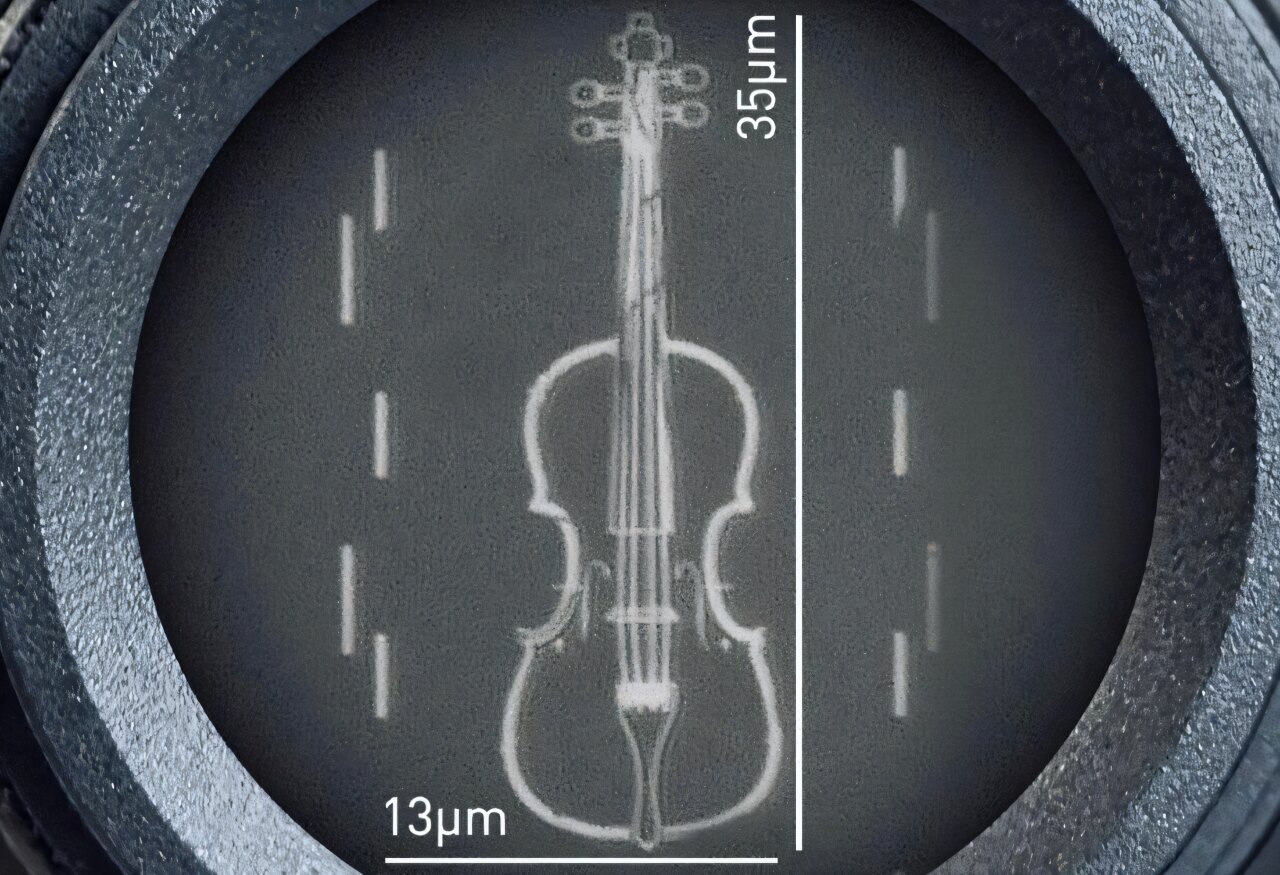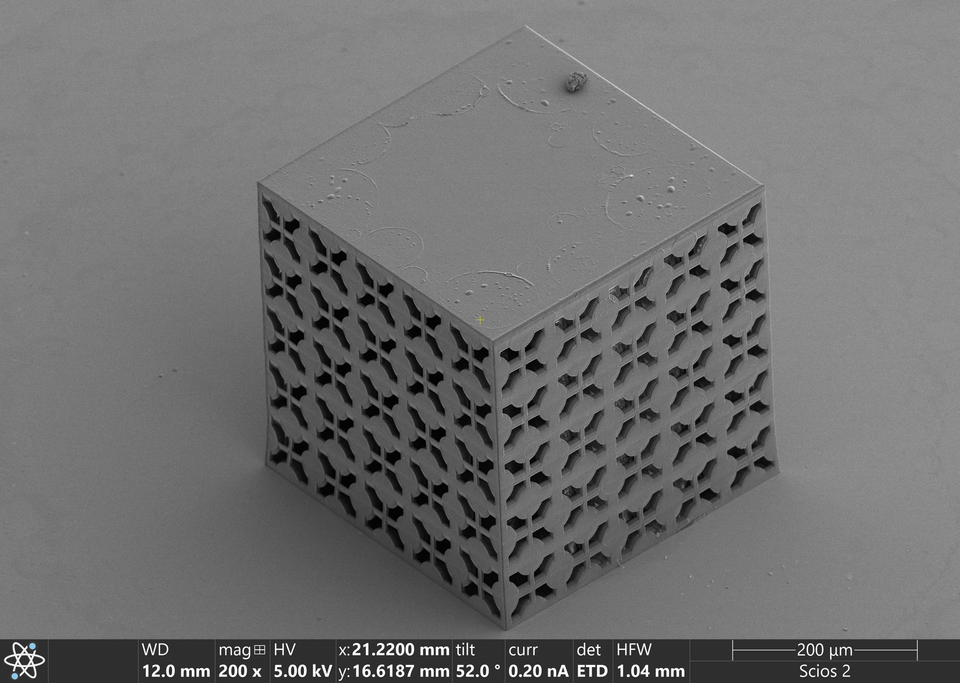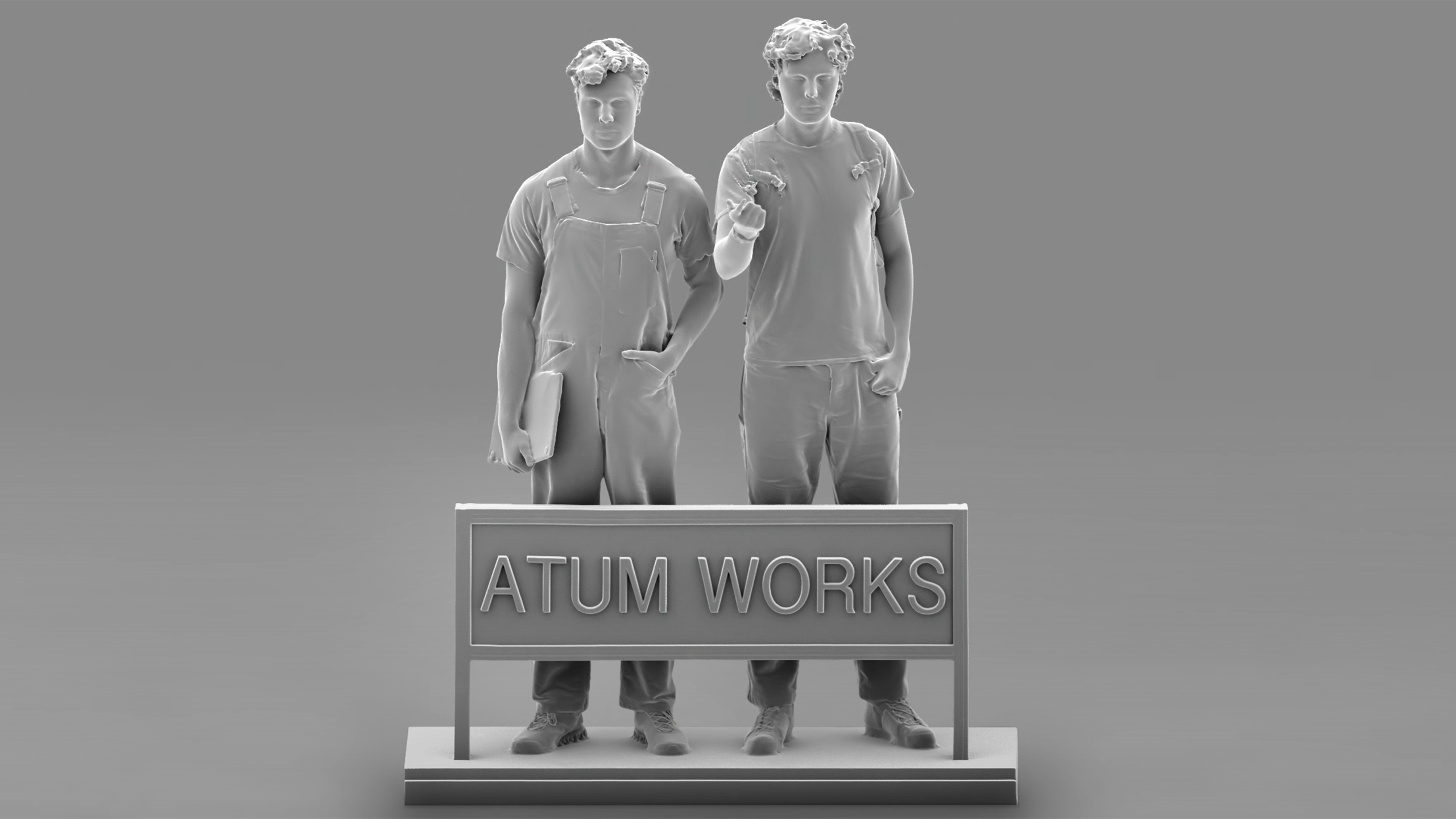It seems like 3D printing is more often than not scaled on the macro side of things, like the world’s tallest 3D printed building that we covered recently, but now and then we get to see things from a micro perspective. Today we’ve got a project to share put together by a team of scientists that have managed to 3D print structures that are so small, you need a microscope to see them. The process creates what the team refers to as scalable phononic metamaterials.
One of the scientists on the team recently shared a post to Reddit answering questions about the development. The setup uses lasers to 3D print extremely small structures that can be fine-tuned in the design process to target specific frequencies for sound dampening. The laser used to polymerize the material when printing is produced with a beam ten times thinner than a human hair.
There are many ways to 3D print with FDM and SLA printers, leading the current market. This 3D printing system relies on a process known as “two-photon polymerization”. This is described as a powerful laser that blasts in short bursts to print. Because the structures need to be microscopic in size, this is one of the best ways the team was able to print with the necessary level of precision.
You may like
-
![]() MIT researchers crack 3D printing with glass
MIT researchers crack 3D printing with glass -
 Scientists print ‘world’s smallest violin’ in platinum with nanolithography
Scientists print ‘world’s smallest violin’ in platinum with nanolithography -
![]() Startup aims to 3D print chips and cut production costs by 90% — nanoprinter operates at wafer scale
Startup aims to 3D print chips and cut production costs by 90% — nanoprinter operates at wafer scale


The team has experimented with several different structure designs, ensuring there’s plenty of room for further experimentation and customization in the future. The final material can be used in a wide variety of places that make the technology a possible game changer in the world of sound control.


